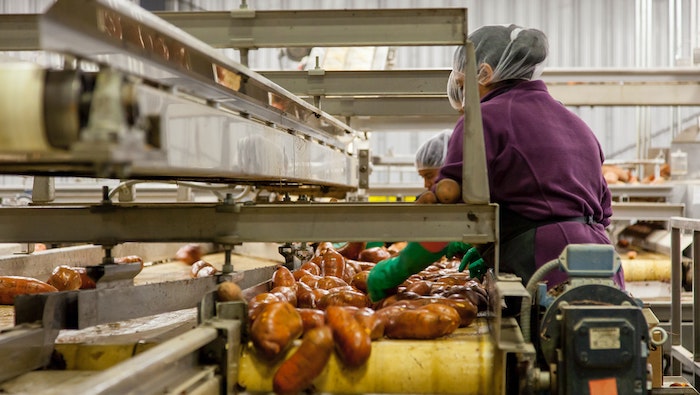The Occupational Safety and Health Administration (OSHA) and the Food and Drug Administration (FDA) have recently provided a checklist for FDA regulated human and food operations. This checklist is recommended to be used while running facilities during the COVID-19 pandemic, especially when re-starting or re-assessing operations after a shutdown or in response to changes due to the COVID-19 health emergency. This checklist may be useful to persons growing and harvesting, packing, manufacturing, processing, or holding human and animal food regulated by the FDA. OSHA maintains that this checklist is encouraged to be used in conjunction with additional information and guidelines provided by the CDC, OSHA, and other regulatory agencies. It is also important to keep in mind that all the information listed within this checklist may not be relevant to all food operations. There is sector-specific information available for certain operations such as agriculture, seafood processing, and meat and poultry processing. These specific operations should follow those additional considerations and the checklist provided by OSHA.
Employee Health and Social Distancing Checklist
This checklist includes many considerations important for employers to consider for conducting employee health screenings and configuration of facilities to enforce social distancing to minimize the spread of COVID-19.
Employee Health: Under the Occupational Health and Safety Act of 1970, OSHA required employers to provide a safe and healthy working environment to ensure that employees remain healthy. This is vital to the continuity of operations. Therefore, in compliance with CDC and OSHA recommendations, any employee who has COVID-19, regardless of whether they have symptoms, should be isolated from the facilities. The following are a list of categories that OSHA has provided recommended questions to consider while operating during the pandemic:
- These questions involve compliance with the recommended practices provided by the FDA, OSHA, CDC, and other regulating agencies.
- Considerations on whether the facilities are free of safety and health hazards, as described by OSHA. A specific concern to keep in mind involves facilities that were shut down for quarantine purposes and are in the process of re-starting operations. For example, has a reduction in normal water use created hazards, such as mold or Legionella in the water system?
- For all personnel. These considerations focus on what has been done to inform employees of proper techniques to help prevent the spread of the virus and what procedures are in place to keep spread at bay. For example, have flyers and infographics been posted to facilitate employee understanding of COVID-19? Are enough handwashing stations and materials necessary for sanitation at the job site? Do you have procedures in place for social distancing, as described by the CDC and OSHA?
- For persons who are symptomatic or develop symptoms at work. This includes considerations as to what procedures are for when an employee has or develops symptoms in relation to COVID-19. For example, what strategies are in place to isolate the employee? What steps will the employer take to inform other employees about a potentially sick employee? What instructions are provided for exposed workers, and how they should proceed based on CDC guidance?
- For employee exposure and testing. OSHA recommends that employers have a protocol in place as to when they should determine that an employee should be tested for COVID-19 for both symptomatic and asymptomatic individuals. It is recommended to look to the CDC recommendations for guidance since this is a relatively new issue to employers. Preparing for matters such as this helps to further strategies, employers can use to be better prepared and be more effective in preventing the spread of COVID-19 in their facilities.
- For work environment configuration. The FDA, CDC, and OSHA agree that enforcing social distancing is vital in preventing the spread of COVID-19. Recommendations are to assemble workstations at least six feet apart and ensure that workers are not directly facing one another. If it is not possible to maintain a distance of six feet apart, then it is suggested that physical barriers are put into place. Also, regarding areas outside of production (i.e., break rooms, restrooms, locker rooms, etc.), employers are encouraged to configure these areas to promote social distancing. An additional suggestion is to create schedules where workers alternate the use of these areas more frequently to reduce the number of people taking a break or coming to and leaving work at the same time.
Food Safety Checklist
There is currently no evidence that food or food packaging has been associated with the transmission of COVID-19. However, the CDC and OSHA are primarily concerned about areas in facilities – processing lines and other busy areas in plants where workers are in close contact – that may contribute significantly to the spread of the virus or exposure risk. The checklist provided by OSHA includes questions for human and animal food operations to consider when addressing facility changes due to COVID-19 and considerations for re-opening facilities after a shutdown. These questions are meant to have employers consider potential impacts of changes, such as those to personnel, suppliers, goods manufacturing practices, and food safety plans. In summation, protocols to ensure basic sanitation and protection from contamination in human and animal food are still very important, and OSHA provides further considerations to maintain these practices in light of COVID-19.
For help with OSHA matters, please call (312) 894-3322 or fill out our contact form.
Additional OSHA/COVID-19 Resources
Steps to Take to Prepare for COVID-19 Claims NOW

